DL-去甲肾上腺素 盐酸盐, 98%,DL-Norepinephrine Hydrochloride
产品编号:西域试剂-WR120692| CAS NO:55-27-6| MDL NO:MFCD00012880| 分子式:(HO)2C6H3CH(OH)CH2NH2 · HCl| 分子量:205.64
DL-Norepinephrine hydrochloride 是模拟内源性去甲肾上腺素的拟交感神经作用的合成苯乙胺。DL-Norepinephrine hydrochloride 是一种靶向 α1 adrenoceptor 和 β1 adrenoceptor 的神经递质,可降低心内膜下氧分压。
本网站销售的所有产品仅用于工业应用或者科学研究等非医疗目的,不可用于人类或动物的临床诊断或者治疗,非药用,非食用,
| 英文名称 | DL-Norepinephrine Hydrochloride | ||||||||||||||||
|---|---|---|---|---|---|---|---|---|---|---|---|---|---|---|---|---|---|
| CAS编号 | 55-27-6 | ||||||||||||||||
| 产品描述 | DL-Norepinephrine hydrochloride 是模拟内源性去甲肾上腺素的拟交感神经作用的合成苯乙胺。DL-Norepinephrine hydrochloride 是一种靶向 α1 adrenoceptor 和 β1 adrenoceptor 的神经递质,可降低心内膜下氧分压。 | ||||||||||||||||
| 产品熔点 | 140-144ºC (dec.) | ||||||||||||||||
| 产品沸点 | 442.6ºC at 760mmHg | ||||||||||||||||
| 产品密度 | 1.397g/cm3 | ||||||||||||||||
| 产品闪点 | 221.5ºC | ||||||||||||||||
| 精确质量 | 205.050568 | ||||||||||||||||
| PSA | 86.71000 | ||||||||||||||||
| LogP | 1.59220 | ||||||||||||||||
| 外观性状 | crystalline | off-white to tan | ||||||||||||||||
| 溶解性数据 | In Vitro:
1M HCl : 100 mg/mL (486.29 mM; ultrasonic and adjust pH to 1 with HCl) DMSO : 50 mg/mL (243.14 mM; Need ultrasonic) 配制储备液
*
请根据产品在不同溶剂中的溶解度选择合适的溶剂配制储备液;一旦配成溶液,请分装保存,避免反复冻融造成的产品失效。 In Vivo:
请根据您的实验动物和给药方式选择适当的溶解方案。以下溶解方案都请先按照 In Vitro 方式配制澄清的储备液,再依次添加助溶剂:
——为保证实验结果的可靠性,澄清的储备液可以根据储存条件,适当保存;体内实验的工作液,建议您现用现配,当天使用;
以下溶剂前显示的百
| ||||||||||||||||
| 靶点 |
IC50: α1 adrenoceptor and β1 adrenoceptor | ||||||||||||||||
| 储存条件 | 2-8°C |
相关文档
化学品安全说明书(MSDS)
下载MSDS质检证书(COA)
相关产品
| 符号 |
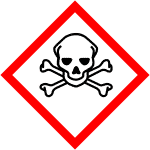
GHS06 |
|---|---|
| 信号词 | Danger |
| 危害声明 | H301 |
| 警示性声明 | P301 + P310 |
| 个人防护装备 | Eyeshields;Faceshields;Gloves;type P2 (EN 143) respirator cartridges |
| 危害码 (欧洲) | T |
| 风险声明 (欧洲) | R25 |
| 安全声明 (欧洲) | 36/37/39-45 |
| 危险品运输编码 | UN 2811 |
| WGK德国 | 3 |
| RTECS号 | DN6650000 |
| 包装等级 | III |
| 危险类别 | 6.1(b) |
| 海关编码 | 2922509090 |
Synonym: Section 2 - COMPOSITION, INFORMATION ON INGREDIENTS
Risk Phrases: None Listed. Section 3 - HAZARDS IDENTIFICATION EMERGENCY OVERVIEW
The toxicological properties of this material have not been fully investigated. Potential Health Effects Eye: May cause eye irritation. The toxicological properties of this material have not been fully investigated. Skin: May cause skin irritation. The toxicological properties of this material have not been fully investigated. Ingestion: May cause gastrointestinal irritation with nausea, vomiting and diarrhea. The toxicological properties of this substance have not been fully investigated. Inhalation: The toxicological properties of this substance have not been fully investigated. Inhalation of dust may cause respiratory tract irritation. Chronic: No information found. Section 4 - FIRST AID MEASURES Eyes: Flush eyes with plenty of water for at least 15 minutes, occasionally lifting the upper and lower eyelids. Get medical aid immediately. Skin: Get medical aid. Flush skin with plenty of water for at least 15 minutes while removing contaminated clothing and shoes. Wash clothing before reuse. Ingestion: If victim is conscious and alert, give 2-4 cupfuls of milk or water. Never give anything by mouth to an unconscious person. Get medical aid immediately. Inhalation: Remove from exposure and move to fresh air immediately. If not breathing, give artificial respiration. If breathing is difficult, give oxygen. Get medical aid. Notes to Physician: Section 5 - FIRE FIGHTING MEASURES General Information: As in any fire, wear a self-contained breathing apparatus in pressure-demand, MSHA/NIOSH (approved or equivalent), and full protective gear. During a fire, irritating and highly toxic gases may be generated by thermal decomposition or combustion. Extinguishing Media: Use agent most appropriate to extinguish fire. Use water spray, dry chemical, carbon dioxide, or appropriate foam. Section 6 - ACCIDENTAL RELEASE MEASURES General Information: Use proper personal protective equipment as indicated in Section 8. Spills/Leaks: Clean up spills immediately, observing precautions in the Protective Equipment section. Sweep up or absorb material, then place into a suitable clean, dry, closed container for disposal. Avoid generating dusty conditions. Provide ventilation. Section 7 - HANDLING and STORAGE Handling: Wash thoroughly after handling. Use only in a well-ventilated area. Minimize dust generation and accumulation. Avoid contact with eyes, skin, and clothing. Keep container tightly closed. Avoid ingestion and inhalation. Storage: Store in a tightly closed container. Store in a cool, dry, well-ventilated area away from incompatible substances. Section 8 - EXPOSURE CONTROLS, PERSONAL PROTECTION Engineering Controls: Use adequate ventilation to keep airborne concentrations low. Exposure Limits CAS# 55-27-6: Personal Protective Equipment Eyes: Wear appropriate protective eyeglasses or chemical safety goggles as described by OSHA's eye and face protection regulations in 29 CFR 1910.133 or European Standard EN166. Skin: Wear appropriate protective gloves to prevent skin exposure. Clothing: Wear appropriate protective clothing to prevent skin exposure. Respirators: Follow the OSHA respirator regulations found in 29 CFR 1910.134 or European Standard EN 149. Use a NIOSH/MSHA or European Standard EN 149 approved respirator if exposure limits are exceeded or if irritation or other symptoms are experienced. Section 9 - PHYSICAL AND CHEMICAL PROPERTIES Physical State: Powder Color: beige Odor: Not available. pH: Not available. Vapor Pressure: Not available. Viscosity: Not available. Boiling Point: Not available. Freezing/Melting Point: 145.00 - 147.00 deg C Autoignition Temperature: Not available. Flash Point: Not available. Explosion Limits, lower: Not available. Explosion Limits, upper: Not available. Decomposition Temperature: Solubility in water: Specific Gravity/Density: Molecular Formula: C8H11NO3.HCl Molecular Weight: 205.64 Section 10 - STABILITY AND REACTIVITY Chemical Stability: Stability unknown. Conditions to Avoid: Incompatible materials. Incompatibilities with Other Materials: Oxidizing agents. Hazardous Decomposition Products: Hydrogen chloride, nitrogen oxides, carbon monoxide, carbon dioxide. Hazardous Polymerization: Has not been reported Section 11 - TOXICOLOGICAL INFORMATION RTECS#: CAS# 55-27-6: DN6650000 LD50/LC50: Not available. Carcinogenicity: DL-Norepinephrine Hydrochloride - Not listed by ACGIH, IARC, or NTP. Other: See actual entry in RTECS for complete information. Section 12 - ECOLOGICAL INFORMATION Section 13 - DISPOSAL CONSIDERATIONS Dispose of in a manner consistent with federal, state, and local regulations. Section 14 - TRANSPORT INFORMATION IATA Shipping Name: ALKALOID SALTS, SOLID, N.O.S.* Hazard Class: 6.1 UN Number: 1544 Packing Group: III IMO Shipping Name: ALKALOIDS, SOLID, N.O.S. Hazard Class: 6.1 UN Number: 1544 Packing Group: III RID/ADR Shipping Name: ALKALOID SALTS, SOLID, N.O.S. Hazard Class: 6.1 UN Number: 1544 Packing group: III Section 15 - REGULATORY INFORMATION European/International Regulations European Labeling in Accordance with EC Directives Hazard Symbols: Not available. Risk Phrases: Safety Phrases: S 26 In case of contact with eyes, rinse immediately with plenty of water and seek medical advice. S 28A After contact with skin, wash immediately with plenty of water. S 37 Wear suitable gloves. S 45 In case of accident or if you feel unwell, seek medical advice immediately (show the label where possible). WGK (Water Danger/Protection) CAS# 55-27-6: No information available. Canada None of the chemicals in this product are listed on the DSL/NDSL list. CAS# 55-27-6 is not listed on Canada's Ingredient Disclosure List. US FEDERAL TSCA CAS# 55-27-6 is not listed on the TSCA inventory. It is for research and development use only. SECTION 16 - ADDITIONAL INFORMATION N/A |
|
~99% 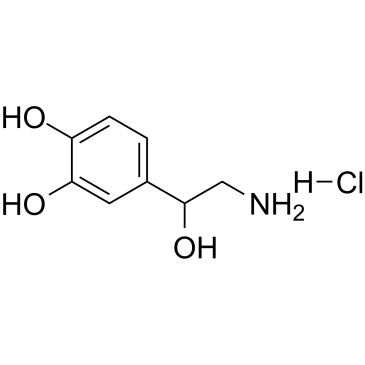
55-27-6 |
| 文献:Bernini, Roberta; Crisante, Fernanda; Barontini, Maurizio; Fabrizi, Giancarlo Synthesis, 2009 , # 22 art. no. P09409SS, p. 3838 - 3842 |
|
~95% 
55-27-6 |
| 文献:NEON LABORATORIES LTD.; DALVI, Mahesh Bhagoji; KENNY, Rajesh Shashikant; KAWLE, Ganesh Ramachandra Patent: WO2013/8247 A1, 2013 ; Location in patent: Page/Page column 10 ; |

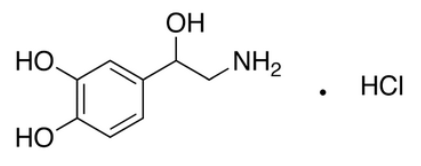
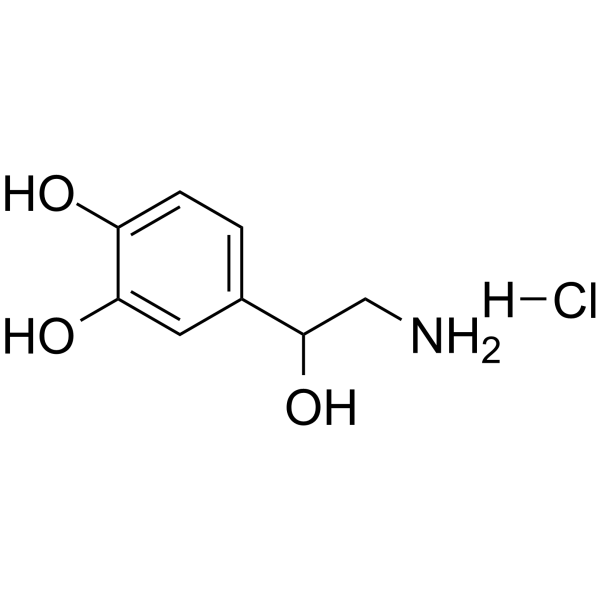
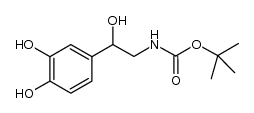
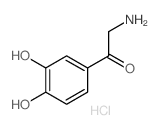





 浙公网安备 33010802013016号
浙公网安备 33010802013016号